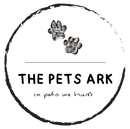Processionary caterpillars are stinging caterpillars that represent a real danger for our pets as well as for us, their humans. It is now the season of their return, several processions have already been noticed in France.
They are capable of causing severe inflammatory and stinging reactions that can lead to severe necrosis.
Discover how to recognize them and what are the signs to avoid them.
Processionary caterpillars
Thaumetopoea pityocampa, are the pine caterpillars, because the eggs are laid there. The responsible moth chooses pine trees because the needles allow it to feed the caterpillars to lay their eggs.
They are called processionaries because they move in a line, one after the other, when they leave the tree to moult and transform into a butterfly in soft soil, buried.
The lead caterpillar leads the way because the others are blind.
The caterpillars whose descent in spring as soon as the sunny days return. Once buried, they transform into moths several months, even several years after burial.
There is also an oak processionary caterpillar, but they come down from the tree later in the spring and do not form a real procession once they come down.

What is the risk to my dog or cat?
Caterpillars have extremely poisonous stinging hairs that contain a toxin (thaumetopoein). These toxins are not distributed via the long bristles that can be seen with the naked eye, but on very small hairs that can easily detach from the caterpillar.
These small toxic hairs are released very easily when touched.
Dogs are the most exposed because they will tend to want to play with them out of curiosity, or smell them closely with their nose. Cats generally take fewer risks and stay away.
Big trap of the stinging hairs, if the dog licks the caterpillar and then licks his coat, the stinging hairs will spread everywhere he licks.
Symptoms in case of contact
When contact occurs, the stinging hairs of the caterpillar can be similar to hundreds of micro stings. A violent and rapid reaction will develop into an allergic reaction (burning, redness, edema, pain, swelling). Vomiting is also possible.
If the lesions are in the eyes, this can lead to severe conjunctivitis.
The animals are then very reactive because of the pain and discomfort, which makes them very agitated and impossible to calm down.
The first main cause of danger is anaphylactic shock, which can lead to respiratory weakness and death. The second is tongue necrosis, which often requires the veterinarian to remove a piece when possible. If this is not possible, euthanasia must be considered, as the animal would no longer be able to feed itself.
The human being is not safe, the same symptoms are to be expected in case of contact.

What treatment ?
An emergency visit to your veterinarian (or doctor if you are affected) is inevitable. The veterinarian will clean, disinfect and inject powerful anti-inflammatory and antihistamine drugs, often with painkillers and antibiotics to calm and reduce the inflammation.
Wearing gloves is essential because the urticarial hairs remain active. In case of contact with the tongue, the veterinarian will certainly take the decision to partially remove a piece of the tongue, to avoid that the necrosis increases.
Means of prevention
Be vigilant in the spring, especially if you have pine trees near your home. Avoid the area at all costs, do not let your pets roam around.
Never try to destroy a nest yourself, the risk is much too great. Contact your town hall if you have encountered one.
Don't mow after the caterpillars have passed, and don't walk in the pine forest on windy days, the stinging hairs can be blown away by the wind!

See you next time on The Pets Ark !
The Pets Ark family


